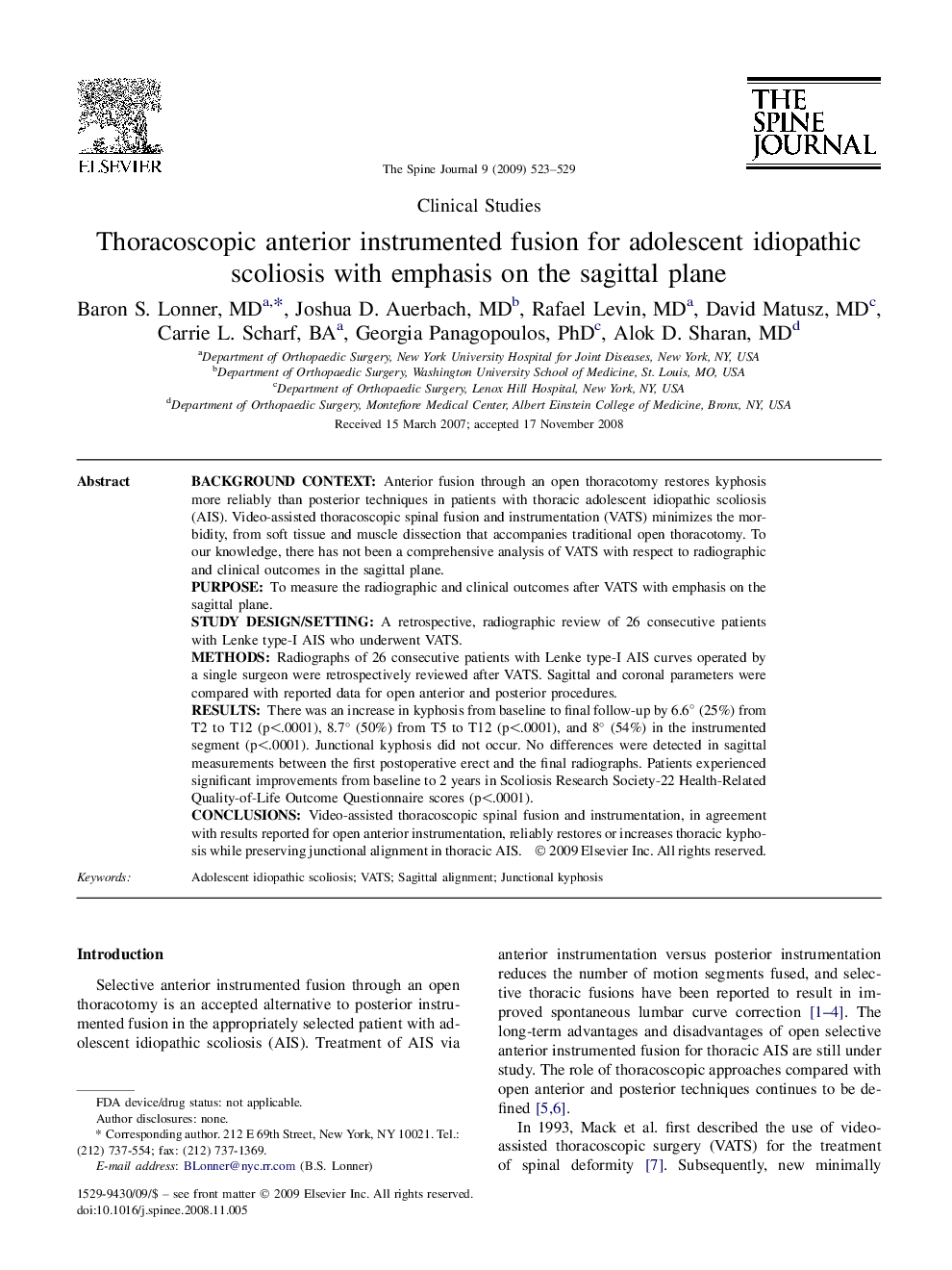| Article ID | Journal | Published Year | Pages | File Type |
|---|---|---|---|---|
| 4099586 | The Spine Journal | 2009 | 7 Pages |
Background contextAnterior fusion through an open thoracotomy restores kyphosis more reliably than posterior techniques in patients with thoracic adolescent idiopathic scoliosis (AIS). Video-assisted thoracoscopic spinal fusion and instrumentation (VATS) minimizes the morbidity, from soft tissue and muscle dissection that accompanies traditional open thoracotomy. To our knowledge, there has not been a comprehensive analysis of VATS with respect to radiographic and clinical outcomes in the sagittal plane.PurposeTo measure the radiographic and clinical outcomes after VATS with emphasis on the sagittal plane.Study design/settingA retrospective, radiographic review of 26 consecutive patients with Lenke type-I AIS who underwent VATS.MethodsRadiographs of 26 consecutive patients with Lenke type-I AIS curves operated by a single surgeon were retrospectively reviewed after VATS. Sagittal and coronal parameters were compared with reported data for open anterior and posterior procedures.ResultsThere was an increase in kyphosis from baseline to final follow-up by 6.6° (25%) from T2 to T12 (p<.0001), 8.7° (50%) from T5 to T12 (p<.0001), and 8° (54%) in the instrumented segment (p<.0001). Junctional kyphosis did not occur. No differences were detected in sagittal measurements between the first postoperative erect and the final radiographs. Patients experienced significant improvements from baseline to 2 years in Scoliosis Research Society-22 Health-Related Quality-of-Life Outcome Questionnaire scores (p<.0001).ConclusionsVideo-assisted thoracoscopic spinal fusion and instrumentation, in agreement with results reported for open anterior instrumentation, reliably restores or increases thoracic kyphosis while preserving junctional alignment in thoracic AIS.
